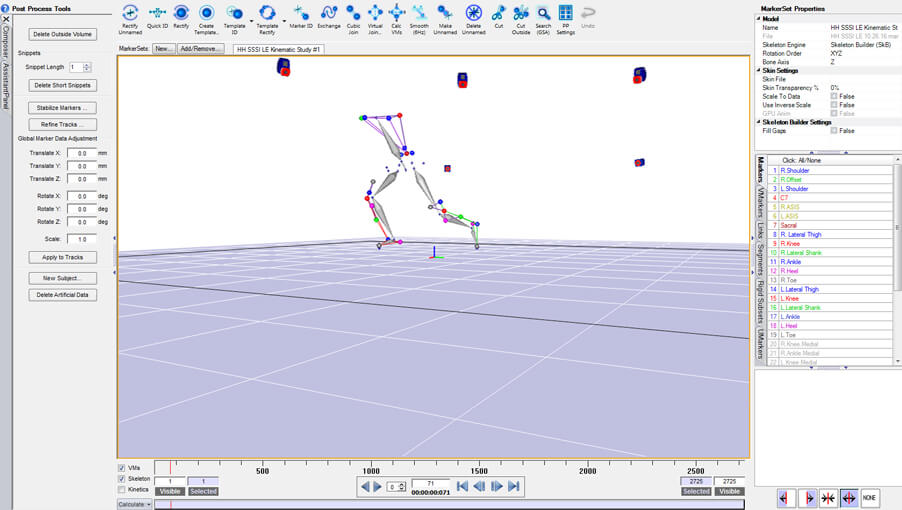FARGO, N.D. — Playing hockey is big in these parts, and the game itself comes with its own set of usual injuries. Now researchers at Sanford Health are using 3-D motion systems to track athlete movements, so they can better understand and prevent injuries.
Orthopedic surgeon Benjamin Noonan, M.D., and Sanford Health’s biomechanical research lab are collaborating to study the movements of players to provide insight on the development of musculoskeletal injuries.
“This is very unique for hockey,” said Colin Bond, a biomechanist with the Sanford Sports Science Institute. “Our region is really focusing on ice hockey, and not a lot of other places really focus on ice hockey like we do.”
The lab uses synthetic ice, which is made of plastic but mimics real ice. The artificial ice exhibits a similar friction, so players can still use their normal hockey skates.
The researchers apply adhesive reflective markers to each player’s bony landmarks, such as the hips, knees and ankles. The markers, which are about the size of a marble, show up on a 3D motion capture system to create three-dimensional models of the athletes moving and competing.
“This is really cool because you’re probably used to seeing this technology used in video game and movie making,” Bond said. “Every summer, the biggest movie hits that we’re going to see, and they’re using the same technology, but we get to use it to study sports which is quite unique.”
Due to the large space of the lab, researchers are able to set up a long runway of synthetic ice and test high velocity moments.
“We can have ice hockey players skate pretty quickly and it allows us to simulate more of a game-like feel,” Bond said.
Dr. Noonan and Bond assess the comparison between skating on real and artificial ice.
“We’re hoping to use that as, really, an integral part of looking at injuries and other training studies with hockey players because it’s really hard to collect that kind of information out on true ice,” Dr. Noonan said.
His hope is to set the standard for on-ice hockey research, so other labs around the world can refer back to Sanford Health’s work to study diseases and risk factors for athletes.
…
Posted In Health Information, Orthopedics
